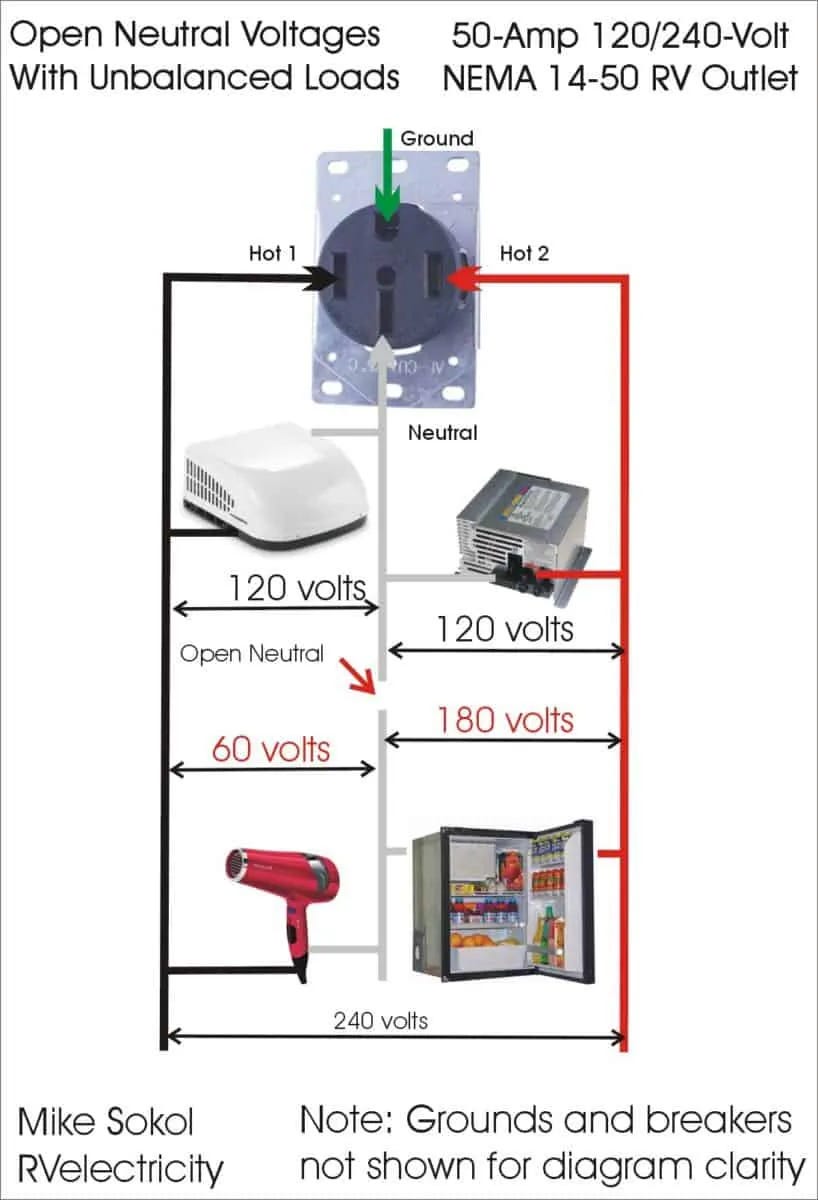From my facebook group…
Hey Mike,
At my current campground was an example of a great reason to use an EMS. I plugged our EMS into the 50 amp line and got a voltage of about 55 on one leg, 160 on the other leg and an E3 message there was a problem. I turned off the breaker and checked the 30 amp breaker, no problem so I used that one. I reported to the manager. He had someone come out, they said no problem.
The manager stopped by the next day and said no problem. I said let me show you and plugged in the 50 amp EMS into the 50 amp line, no power which blew my mind. Anyhow I unplugged the 30 amp line and plugged in the 50 amp ems and once the breaker was turned on you could hear all kind of shorting out. Don't know what the problem was but glad I had EMS Surge Protector. - Kevin
Hey Kevin,
That voltage imbalance was caused by an open or burned neutral feeding the pedestal or 50-amp receptacle. In your case it was likely a failed neutral connection on the 50-amp receptacle since the 30-amp receptacle still worked. As you noted, an advanced EMS surge protector will shut off the shore power before excessive voltage can damage your RV. That’s what saved your RV from electrical damage.
Why does this happen?
In the US we have split-phase 120/240-volt power. Basically one of the 240-volt phases from the power company is split in half by the neutral to form two hot legs of 120-volts each.
As you can see in the diagram above, if the neutral conductor is interrupted then the 240-volt phase is no longer split equally into 120 and 120 volts. The leg with the higher current load will have the voltage dip to perhaps 60 volts, while the lower current leg can rise to 180 volts or more.
Read my in-depth article about open neutral dangers HERE.
Do you need an EMS / Advanced Surge Protector in your RV at home?
My dad had an open neutral occur on the incoming service at his rental property. When the wind blew some of lights would get really bright and burn out. I measured 145 volts on one leg which blew up his new furnace controller TWICE.
My own house had a branch fall on a power line and we lost one of the split-phase legs. Nothing was damaged, but the power was off in half of the house.
So yes, residential power can have an open neutral or a lost leg. And the voltage can go dangerously high if the incoming neutral opens up. I’ve personally seen both events occur.
Let’s play safe out there… Mike









Several years ago my sister called me to say some lights were dim and some were bright in her trailer they use as a hunting cabin in the mountains. It turns out a lighting strike took out the neutral from the meter at the pole to the trailer.
Can also happen at your shore power plug or cord, cord reel, automatic transfer switch, or circuit breaker panel.